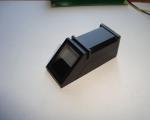How to insert a frame in Photoshop. Insert the photo into the frame using Photoshop. Now let's look at inserting a photo into a frame in .png format
4 votesGood day, dear readers of my blog. Photos in beautiful frames can be not only a spectacular gift that you wouldn’t be ashamed to send to friends for a holiday via the Internet, but also a stylish element of your website design. They can be used as part of the content or as an independent element. For example, placing it in the header, next to the logo.

Therefore, today I will tell you how to make a frame in Photoshop. All the methods that I will give in this article are quite simple, even a beginner can do it. If you are not too sure or don’t trust your own taste, then even in this case, I will tell you what to do. Well, shall we get started?
A way to quickly make a frame of one color

If you just follow the photo, you will end up with an oval frame.

If you simultaneously hold down the Shift button on the keyboard, it will be round. By the way, this button can also turn a rectangle into a square.

You can click on the eye next to the layer's thumbnail to toggle the visibility of the fill on and off. It’s naturally easier to select from the background by turning off the top layer.

But further actions will have to be done by turning on the top layer. And making it active. Watch the backlight.

When you're ready, press Del.

You can trim the edges.

Unusual frame edges
Now let's make a frame with unusual inner edges. First, create a new layer. You already know how to do this.

Now find Q on the keyboard and press to switch to quick mask mode.

Apply free transform using CTRL+T and reduce the size.

In the top menu we find “Filters” - “Distortion”. You can apply Wave, distortion, curvature, polar coordinates, spherization. I like the ripples.

We pull the slider to increase or decrease the effect, and then save.

That's not all yet. Click on Q.

We have highlighted the edges. By the way, use your imagination when working in Photoshop. This selection does not resemble the same as when working with circles, ellipses or themes. Think about how to use Photoshop's capabilities differently than the authors of such articles show you. Do not treat the acquired knowledge as a guide for action.

For now, these crawling ants won't help much. Select Invert from the Selection menu to fill the area you want.

This is how it should work out for you. Be careful, further work should take place on the top layer, and not on the bottom.

You can apply a gradient.

Or one color.

Press CTRL+D to get rid of crawling ants.

Very nice frames for beginners
I already showed you the site photoshop-master. You may have noticed that there is a section with free and very beautiful frames. Even a beginner can use them. All of them are free.

Using them is quite simple if you look at these wonderful instructions.
You can find other free video lessons from the founders of Photoshop Master at this link: www.photoshop-master.ru/lessons .
However, if you want to achieve greater heights, then you do not need a specific solution to problems. There are no professionals who can draw a frame from a gradient, but will go to Google to create a transparent one.
They delve into their own heads and knowledge of the tools helps them figure out how to achieve this themselves. If you are interested in this, I can recommend Zinaida Lukyanova’s course “Photoshop from scratch in video format” .

If you liked this article, subscribe to the newsletter, VKontakte group and get more useful information about making money on the Internet.
Good luck in your endeavors and see you again!
Hi all. Today we will talk about how to solve a frequently asked question, namely, inserting an image into a frame. To begin with, I’ll tell you that inserting images into a frame can be different, let’s look at the examples below:
Example 1
Example 2

As we can see from the examples, the type of frames is completely different: in the first example we placed a frame on top of the image, and in the second we processed the edge of the image, thereby creating a frame.
I will describe both of these examples in two lessons.
Insert the image into the frame: method 1
Sometimes, it is interesting to place an image under a frame, for example, a photograph of a friend, then send it to him - he will print it and hang it on the wall ;-).
And the best part is that anyone can do this, i.e. You don't need any special Photoshop skills here.
Let's say you've already found the picture you want, now all you have to do is find the frame. Many Internet resources have frames, some even have large archives. All you need is to choose the one you like and download. Before downloading, pay attention to what they write: usually such frames indicate that it can be downloaded in *.psd - the central part is already cut out there and you do not have to cut it out additionally.
Now open your image, on which we will add a frame. I have this picture:

Let's copy the entire image and open the downloaded *.psd file in Photoshop. Note that the frame itself has transparency in the center:

Create a new layer and place it below the frame layer.

Paste the previously copied image onto the newly created layer. If it does not fit in size, then adjust either the image to the size of the frame, or the frame to the size of the image, by selecting the appropriate layer and using the function: Edit ? Transform? Free Transform, then drag the corner handle while holding down the Shift key to shrink/stretch it proportionally.
To do this, you and I will need the graphic editor Adobe Photoshop. I assure you, it’s very easy to frame a photo using Photoshop, even if you don’t know how to work with it at all!
1. Open an image with the selected frame in Photoshop (File menu --> Open or Ctrl-O key combination):
In the center of the picture with a frame there is a transparent area (it is indicated by gray and white cells), in which the photo will be located.
2. Open the photo you want to frame.

Now, on the toolbar on the left, click the button, “grab” the photo with the mouse and drag it into the window with a frame. The photo will overlap the frame and we need to move it down. To do this, find the panel on the right (it's called the palette) Layers. Now you have 2 layers on the image: one with a frame, the other with a photo. You need to move the photo layer down. This is done simply: click on the name of the layer and drag it “under” the name of the layer with the frame.

Attention! If the frame layer is the Background layer in a Photoshop document, you won't be able to place layers underneath it. To do this, you must first convert it to a regular layer. Just double-click on the name of this background layer and in the window that appears, click OK (you can give your name to this layer if you wish).

Next, we need to resize the photo to fit the frame, and, if necessary, move and rotate it. First make sure that the layer with the photo and not the frame is currently active (the active layer is indicated by a brush icon to the left of its name)

We begin to resize the photo: using the Ctrl-T key combination or through the Edit --> Free Transform menu, select it and change it as we need. To make the photo smaller without distortion, do this while holding down the Shift key. The result will look something like this:

It is better to save the finished photo for future use (printing, creating wallpaper for your desktop, etc.) in the format jpg(Menu File --> Save As). And if you want to be able to edit it in the future, save the “source” as well - that is, save a version of the file in the format PSD.
7 simple ways to make your own frames in Photoshop.
Welcome, dear reader of the site!
To make a frame in Photoshop, you don’t need to know the program well.
Minimal knowledge of Photoshop is enough.
So, let's start from simple to more complex.
Method 1 – stroke.
Open the image. Select either the entire image or part of it.
If you need to make a frame for the entire image, then it is best to use the keyboard shortcut CTRL+A, but if you need to select part of the image, use the selection tools.
After the selection is ready, go to<Редактирование> –<выполнить обводку>
In the window that appears, select the thickness, color, and location of the stroke—inside.


If you choose the stroke location -outside-, then the image size can be reduced using the command -Free Transform - CTRL + T, holding down the Shift key to maintain the proportions.

Or increase the canvas size to the required dimensions.

From the above it follows method 2:using the underlying layer:
The resulting empty space can be filled with any color, gradient, or texture on a new layer.
In this case, the image layer must be above the color layer or texture layer.
If your layer with the image is a background layer, then you should transfer it to a regular layer by double-clicking on it and clicking OK in the window that appears.

Method 3. Use styles.
Create a new layer above the image layer and fill it with any style. Styles for every taste can be downloaded on the Internet.
We select, for example, an oval area and clear it by pressing the Del key.

In this case, the bottom layer with the image can be moved, adjusting it to the resulting frame.
You can add text and also apply a style to it.

Method 4. Use blending options – layer styles.
Create a new document, say 10 cm x 15 cm.
Fill the layer with the pattern you like.
Select the area, clear the contents - Del key
Remove selection, Ctrl+D.
Double-click on the layer, or call up the blending options by clicking on the icon:

Select the overlay options, for example: shadow, emboss, stroke.

Place the image under the resulting layer.

Method 5. in Photoshop.
Open the image and add a new layer.

On a new layer, create a quick mask - press Q.
Then free transformation - reduce the mask in size.
Let's go to Filter - Strokes - Airbrush.

We set the sizes to your liking

Exit the quick mask: press the Q key again
Got selection:
RECEIVE SITE NEWS!

Invert the selection

Fill the selected area (layer 1) with a color or gradient.
Remove selection.

Method 6. Use raster shapes.
Open the image and unlock the background layer.

In the toolbar, select the raster shape that is most suitable for creating a frame. The figures can also be found on the Internet.
Select the desired fragment

We change the location of the layers, and by pressing the Alt key we move the mouse between the layers.
An icon will appear – click.
Then you can merge the layers Ctrl+E
Add a new layer below the image layer

Add overlay effects to the image layer

Fill the bottom layer and you can apply a filter<Эффекты освещения>.
Or any other, play around - whatever you like most.

By changing the transparency of the layer and using masks, you can achieve different effects.

Method 7. Making a transparent frame in Photoshop.
Open the image, duplicate the background layer three times - pressing the Ctrl+J key combination three times
Turn off the top two layers by clicking on the eye icon opposite the layer. And let’s immediately rename the layers so as not to get confused.

Being on layer 1 go to<Фильтр>-<Размытие>-<Размытие по Гауссу>.

Blurring the image

Hello everyone, my dear friends. Let's return to my favorite graphic editor, and today, for beginners, I would like to tell and show how to make a frame in Photoshop around a photo, insert a ready-made one, or draw it yourself in the form of a rectangle. I myself have witnessed how harshly and incorrectly people do this. They just put the photo on the frame and erase everything around it. But this is terribly inconvenient and wrong, so we will do everything right.
Even a complete teapot who just learned about Photoshop today can handle this method. If we already have a certain frame or blank for a vignette, of which today you can find a whole bunch on the Internet, then there is no problem with this at all. Let's say we have two photos: a portrait of a girl and a blank with a transparent background in the right place.


But this can only be done in the most ideal situation, when our workpiece already contains a transparent background.

Inserting a finished frame without a transparent background
The situation gets more complicated when the image is not intended to be a frame. Then you will have to do it yourself. You can, of course, overlay images on top of the object, cutting off unnecessary ends, but this, as I said at the very beginning, is terrible. If you later want to change the photo, its size or position, this can become problematic. It's better to just make a hole and just insert our frame around the photo.
- Open the image with the intended frame and select the selection tool. In this case, you can use a rectangular selection, but I still prefer to use the Rectangular Lasso Tool. However, the picture may have errors.

- Next, we begin to allocate space inside the frame around the perimeter. You should have dotted lines appear.

- After that, check if you have a padlock icon on the layer thumbnail. If yes. then click on it to make it disappear. After this, press the key DELETE, after which the inside of the frame will become transparent. This is exactly what we wanted.

- Next, open the image of the girl (or whatever you have) in the same document.

- But again, it is our first layer, so we will need to move it. Go to the layers panel, and just like in the first option, move the thumbnail of the layer with the girl lower than the frame layer.

- Next, all that remains is to use moving and transformation to move and adjust the size as needed. You can also apply some layer style, such as an inner shadow. It will look more realistic.
This is the final version we got, and we didn’t even have to crop the photo.

Clipping Mask
A very cool method that has long proven itself among designers is creating a clipping mask. I already considered this method when I wrote an article about it, but here I will consider this point in more detail.
We do the framing ourselves
The easiest way to make a frame in Photoshop is to draw it yourself, for example in the form of a colored rectangle. It will be simple, but stylish.
- Let's go in and take it "Rectangle". After that, set the stroke color in the properties (whatever you want), and set the fill color to whatever you want, since then it will be removed anyway. I'll put yellow.

- Now, draw the rectangle we need on the canvas. You can pinch SHIFT so that it turns out square. If you are not satisfied with the thickness, you can always change it in the properties. It is only important that at this moment the Shape tool is activated.

- If you want the outside of the stroke to be rounded or polygonal, you can select this option in the properties.

- You can also add some effects to your frame using . For example, I added embossing and shadow. The remaining properties are unlikely to particularly affect the stroke, since they will be focused on the internal content.

- Now open the image with the girl (or whoever you have). It, as you already understood, will appear as a new layer on top of the figure.

- Next, right-click on the thumbnail of the layer with the girl and select "Create Clipping Mask". Just before doing this, make sure that under the miniature with the girl there is our rectangle with a stroke.

- As you can see, now the girl is inside, as if in the window of a house. All that remains is to move it using " ". You can also enlarge or reduce the image to suit your vision. The most important thing is that the picture is not cropped, but its edges are simply out of sight.

As you can see, everything is simple. You can add some other effects, or write text inside so that it is clear who is depicted. Download some nice font that will look great.
A little later I will definitely post a video tutorial so that there are no problems.
Clipping mask for the finished frame
If the frame is separate, that is, it is on its own layer and is just an element of some composition, then here you will need to do things a little differently, since hiding the image behind a layer simply won’t work.

Of course, you can try to do this, but the result is unlikely to suit you. In many cases, people come with the excess trimmed off. And I will not tire of repeating that this is wrong.
But there is an ideal solution - make a clipping mask.
In principle, everything is very simple here.

Voila. Now the girl is in the frame and can be moved using the Move tool. The most important thing is that the movement will occur outside the frame and no edges will come out.

Photoshop online
The most interesting thing is that you can insert a photo into a frame in Photoshop online, but forget about the method with a clipping mask. This thing, unfortunately, is missing in the online version of the graphics editor. Let's look at our actions from the second example.
- Login to the service online-photoshop and open an image from your computer, namely the very frame into which you will then insert your photo.

- Next, be sure to remove the lock from the layer. To do this, click on it with the left mouse button twice. This will allow us to remove the unnecessary part from the picture.

- Now, select any selection tool. True, in online Photoshop you don’t really have to choose, since there is only a rectangular selection and a regular lasso. Perhaps it will be convenient to use a rectangular selection here.
- And then, holding the left mouse button in one corner of the recess, drag it to the opposite corner. Thus, you should have this very recess highlighted.

- After that, immediately press the button DELETE to remove the core. Part of the picture in the center should become transparent.

- Now, select "File" from the menu - "Open image" and find the photo you want to use inside. I'll take the same girl. But only the photo will open in another document. To drag it onto a document with a frame, hold down the left mouse button on the thumbnail of the layer with the girl and simply drag it to the layer we need, where we have already worked.

- As you can see, the image was transferred too small. To increase it, select the menu item "Edit"- "Free Transform".

- Now, drag it by the corner to enlarge the photo. Just be sure to hold down the key SHIFT so that after enlargement all proportions are preserved. Pull until you have enough, or until the photo overlaps the frame.

- As a final touch, we will need to move the thumbnail of the layer with the girl under the layer with the frame so that it is at the back and no edges are in the way.
We got what we wanted. So, as you can see, even online Photoshop can cope with this task. Of course, most of the functions here are neutered, but sometimes even the standard functionality may be enough.

Well, if you want to seriously learn Photoshop, then be sure to check this out cool video tutorials. They are perfectly structured according to methods from simple to complex, everything is told in simple and human language, so that after studying you simply should not have any questions.
Well, that's all for me. Be sure to subscribe to all my public pages and YouTube channel to always be aware of all the interesting things. I'm waiting for you again. Good luck to you. Bye bye!
Best regards, Dmitry Kostin




